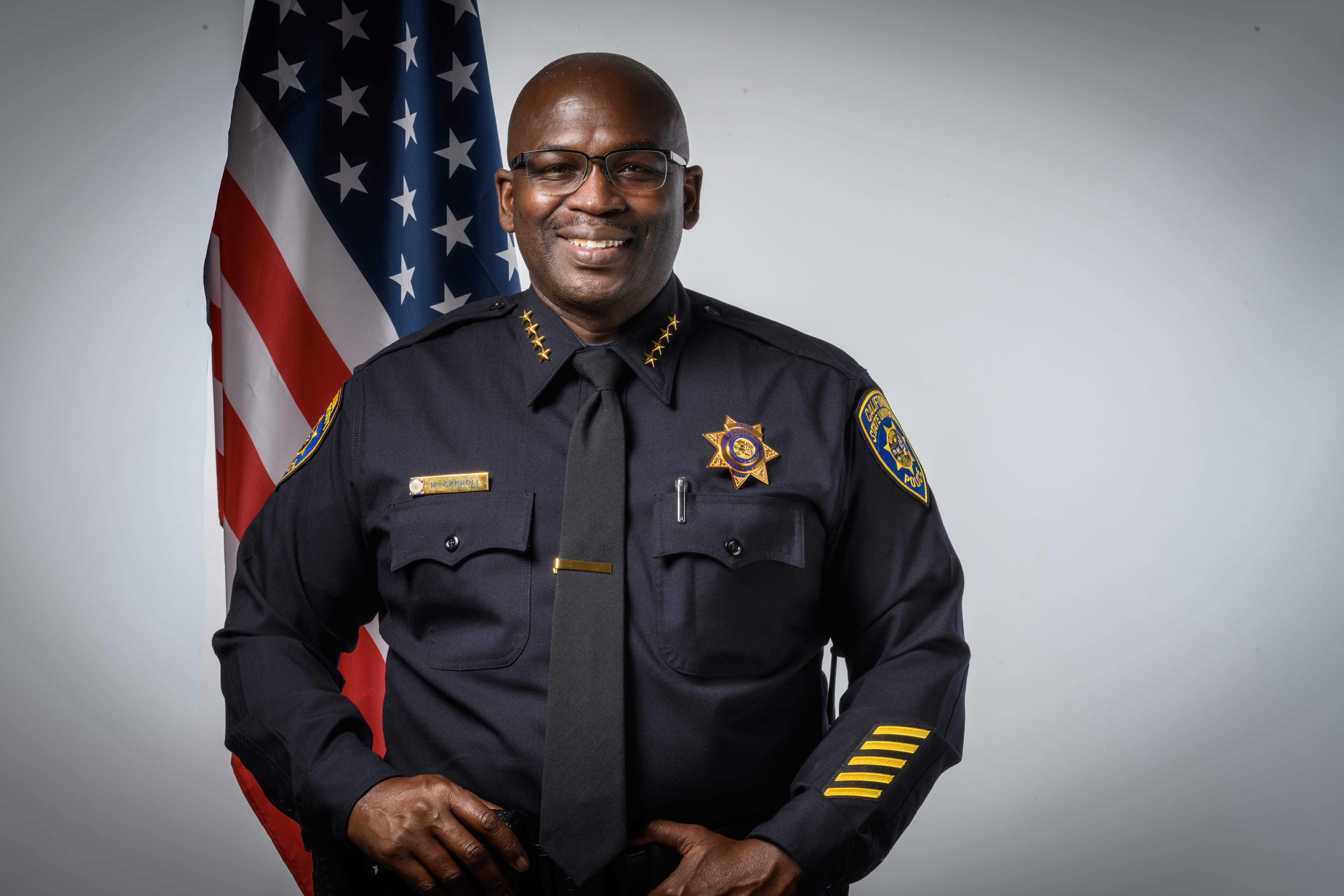Meet SJSU’s New Chief of Police Michael Carroll

Chief Michael Carroll joined SJSU on January 18, 2022.
Having emerged as the top candidate from a national search, Michael Carroll is now less than a month into his tenure as San José State University’s police chief. After more than two decades climbing the ranks of the Alameda County Sheriff’s Office, Carroll brings a blend of law enforcement experience and community engagement to the University Police Department (UPD).
Joining SJSU at a time where the country continues to grapple with its views on law enforcement, Carroll is ready to lead UPD into its next phase of protecting the university and the surrounding area. With the release of the Task Force for Community Policing and Safety report a month before his arrival, Carroll will quickly begin discussions with Interim President Steve Perez on what is ahead for UPD.
We asked Carroll a few questions about this new role, the goals he has for near future and the opportunities and challenges that lie ahead. The following has been lightly edited for clarity.
What excites you about this opportunity at SJSU?
Chief Michael Carroll (MC): Over the past several years, I have sought to bridge the gap between law enforcement and the community. I created spaces for both law enforcement and the community to have robust, in-depth and frank conversations to identify sustainable solutions to enhance public safety. While seeking Chief of Police positions, I saw that San José State University’s values and expectations closely align with mine. SJSU’s desire to have officers present in the university community, be invitational and bring officers to the table, and their goal of creating collaborative partnerships, all align with my vision.
I also see this as a great opportunity to engage and embrace the diverse demographics represented here at the university level.

Chief Carroll joins SJSU after spending more than two decades at the Alameda County Sheriff’s Office.
Do you have any goals for the first 90 days that you would like to implement?
MC: The first 90 days are going to be extremely important.
During this timeframe, it is my intention to identify any internal and external concerns impacting the SJSU UPD. Currently, retention and recruitment is a concern for many law enforcement agencies across the country. I would like to identify ways to recruit members from our community to become a UPD officer to help keep our community safe as well as to restore the public’s trust back into our profession.
I definitely will increase the police department’s visibility across the university’s campus as well as the officer and student engagement. You will see officers walking around holding conversations with those who are traveling across campus or are willing to engage us in conversations.
Also, I will task the law enforcement personnel staff to identify university organizations they would like to partner with and become a liaison for.
In my efforts to address cultural diversity, I will introduce a four-hour Commission on Peace Officer Standards and Training (POST)–certified Cultural Diversity program with an Introduction to Cultural Humility course to not only the UPD staff but also to various university stakeholders as well. This introductory cultural humility course is designed to not only showcase our cultural differences but also our similarities as well, all while appreciating each of us for our own lived experiences.
The Task Force on Community Policing and Safety report was released late last year. What are your thoughts on the report and how do you foresee it being implemented at SJSU?
MC: The Task Force on Community Policing and Safety report is a well-written document that identifies the university community’s recommendations for UPD. As the commanding officer for the San José State University Police Department, I look forward to partnering with members of the campus community and introducing some new ideas and concepts on how to best meet the needs of students and stakeholders.
What unique opportunities and challenges do you think SJSU has being a large urban public university in Silicon Valley?
MC: The university has been recognized by Money magazine as the Most Transformative University in the United States. Collaborating with the diverse demographics that exist in Silicon Valley will allow the UPD to be part of this continuous transformation.
Embracing some of the recommendations included in the President’s Task Force on Community Policing and Safety report, along with implementing some of the recommendations from our staff, will create some very unique learning opportunities.
Some of the biggest challenges I foresee are: managing change and expectations, consistent communications with the campus community about partnering with UPD on our efforts toward ensuring public’s safety; and strengthening and rebuilding trust.
Are there programs or initiatives you implemented in the past that you think could work to bridge the gap between the community and police that we are seeing throughout the nation?
MC: The Alameda County Sheriff’s Office implemented a Community Capital Policing Program that identifies the concerns that negatively impact the community. Then, the officers are tasked with partnering with community stakeholders to address those concerns. The program begins with identifying the officers’ “Why?” “Why did you want to become a police officer?” Using a similar concept here at San José State University will provide officers the opportunity to explore their creativity and help build positive relationships and partners as we all make positive contributions back into the university.
What do you think is most important for the campus community to know about you and the experience you bring as chief of police?
MC: I believe that using innovative policing concepts and strategies, I aspire to make the San José State University Police Department a national model law enforcement agency for other law enforcement agencies to follow.
